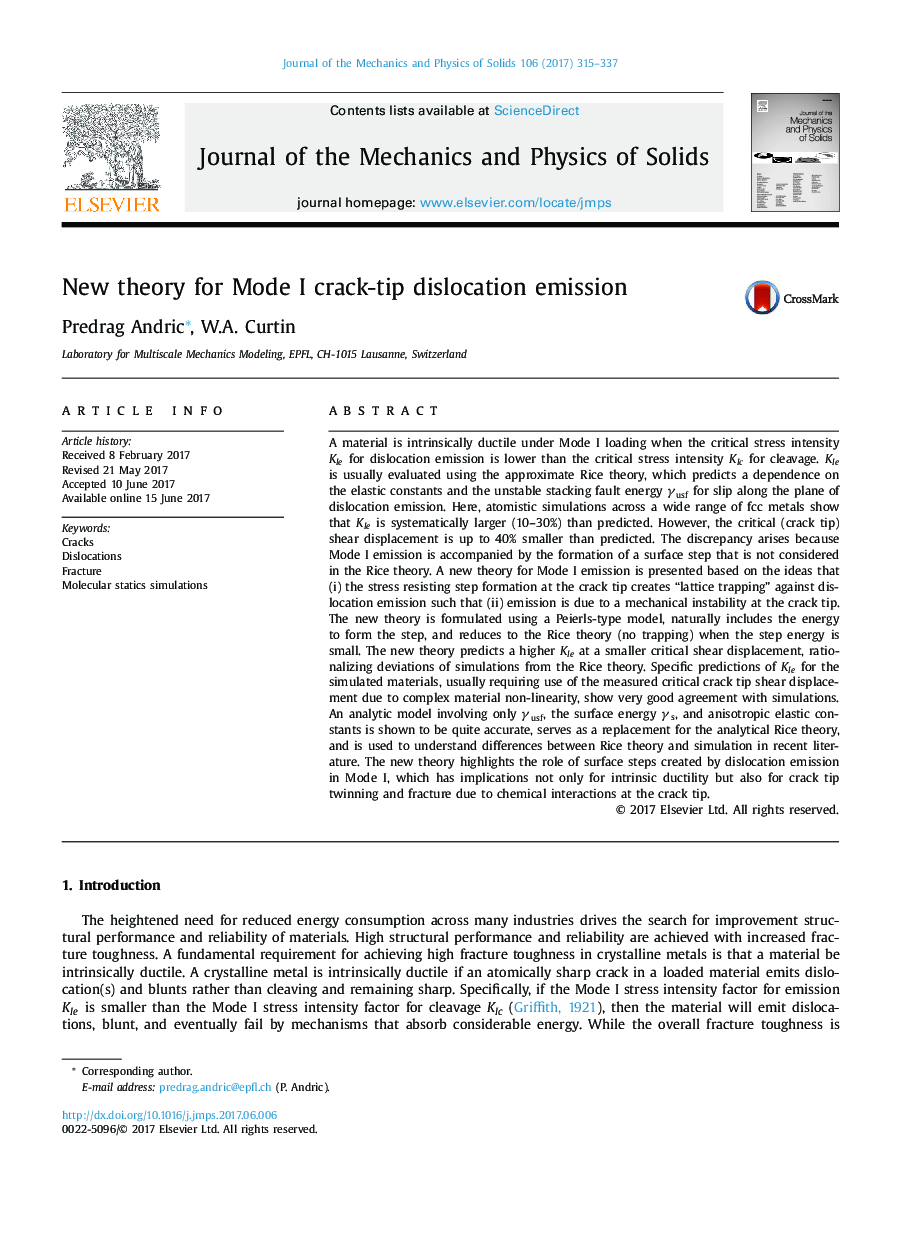| کد مقاله | کد نشریه | سال انتشار | مقاله انگلیسی | نسخه تمام متن |
|---|---|---|---|---|
| 5018102 | 1467037 | 2017 | 23 صفحه PDF | دانلود رایگان |
عنوان انگلیسی مقاله ISI
New theory for Mode I crack-tip dislocation emission
ترجمه فارسی عنوان
نظریه جدیدی برای انتشار حالت منحنی کرک نوری حالت 1
دانلود مقاله + سفارش ترجمه
دانلود مقاله ISI انگلیسی
رایگان برای ایرانیان
کلمات کلیدی
ترک ها، جابجایی، شکستگی، شبیه سازی استاتیک مولکولی،
موضوعات مرتبط
مهندسی و علوم پایه
سایر رشته های مهندسی
مهندسی مکانیک
چکیده انگلیسی
A material is intrinsically ductile under Mode I loading when the critical stress intensity KIe for dislocation emission is lower than the critical stress intensity KIc for cleavage. KIe is usually evaluated using the approximate Rice theory, which predicts a dependence on the elastic constants and the unstable stacking fault energy γusf for slip along the plane of dislocation emission. Here, atomistic simulations across a wide range of fcc metals show that KIe is systematically larger (10-30%) than predicted. However, the critical (crack tip) shear displacement is up to 40% smaller than predicted. The discrepancy arises because Mode I emission is accompanied by the formation of a surface step that is not considered in the Rice theory. A new theory for Mode I emission is presented based on the ideas that (i) the stress resisting step formation at the crack tip creates “lattice trapping” against dislocation emission such that (ii) emission is due to a mechanical instability at the crack tip. The new theory is formulated using a Peierls-type model, naturally includes the energy to form the step, and reduces to the Rice theory (no trapping) when the step energy is small. The new theory predicts a higher KIe at a smaller critical shear displacement, rationalizing deviations of simulations from the Rice theory. Specific predictions of KIe for the simulated materials, usually requiring use of the measured critical crack tip shear displacement due to complex material non-linearity, show very good agreement with simulations. An analytic model involving only γusf, the surface energy γs, and anisotropic elastic constants is shown to be quite accurate, serves as a replacement for the analytical Rice theory, and is used to understand differences between Rice theory and simulation in recent literature. The new theory highlights the role of surface steps created by dislocation emission in Mode I, which has implications not only for intrinsic ductility but also for crack tip twinning and fracture due to chemical interactions at the crack tip.
ناشر
Database: Elsevier - ScienceDirect (ساینس دایرکت)
Journal: Journal of the Mechanics and Physics of Solids - Volume 106, September 2017, Pages 315-337
Journal: Journal of the Mechanics and Physics of Solids - Volume 106, September 2017, Pages 315-337
نویسندگان
Predrag Andric, W.A. Curtin,
